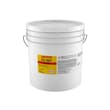LOCTITE ECCOBOND EO7021
Harmonization Code : 3907.30.00.90 | Polyacetals, other polyethers and epoxide resins, in primary forms; polycarbonates, alkyd resins, polyallyl esters and other polyesters, in primary forms : Epoxide resins : Other
Main features
- Fast cure
- Glob top
- Die attach & Encapsulant
Product Description
LOCTITE® ECCOBOND EO7021 one component encapsulant is designed for use in smart card chip module applications. It cures fast at moderate temperatures and is also suitable for die attach automated reel to reel processing. It's a good and very reasonably priced die attach/encapsulation combination similar to EO7029.
LOCTITE® ECCOBOND EO7021 has great compatibility with the newly formulated LOCTITE ABLESTIK ABP 2035SCR which and has been improved to be compatible with UV-curable smart card encapsulants.
Technical Specifications
| General Properties | |
| Specific Gravity Specific Gravity Specific gravity (SG) is the ratio of the density of a substance to the density of a reference substance; equivalently, it is the ratio of the mass of a substance to the mass of a reference substance for the same given volume. For liquids, the reference substance is almost always water (1), while for gases, it is air (1.18) at room temperature. Specific gravity is unitless. | 1.19 |
| Thermal Properties | |
| Glass Transition Temperature (Tg) Glass Transition Temperature (Tg) The glass transition temperature for organic adhesives is a temperature region where the polymers change from glassy and brittle to soft and rubbery. Increasing the temperature further continues the softening process as the viscosity drops too. Temperatures between the glass transition temperature and below the decomposition point of the adhesive are the best region for bonding. The glass-transition temperature Tg of a material characterizes the range of temperatures over which this glass transition occurs. | 125 °C |
| Mechanical Properties | |
| Elongation Elongation Elongation is the process of lengthening something. It is a percentage that measures the initial, unstressed, length compared to the length of the material right before it breaks. It is commonly referred to as Ultimate Elongation or Tensile Elongation at break. | 3.97 % |
| Physical Properties | |
| Viscosity Viscosity Viscosity is a measurement of a fluid’s resistance to flow. Viscosity is commonly measured in centiPoise (cP). One cP is defined as the viscosity of water and all other viscosities are derived from this base. MPa is another common unit with a 1:1 conversion to cP. A product like honey would have a much higher viscosity -around 10,000 cPs- compared to water. As a result, honey would flow much slower out of a tipped glass than water would. The viscosity of a material can be decreased with an increase in temperature in order to better suit an application | 17,000 mPa.s |
Additional Information
Recommended Cure for Reel-to-Reel Processing
- Substrate and Chip Module Preheat, ºC 100
- Precure 3 minutes @ 140°C
- Postcure (after reel is completely full) 16 hours @ 100°C
Alternate Cure for Reel-to-Reel Processing
- Precure 1 hour @ 100°C
- Postcure 6 hours @ 120°C
This applies only to coating chip module with 10 to 100 mg of LOCTITE EO7021.
Recommended Cure for Non-Conductive Die Attach Application
- 1 hour @ 120°C or
- 5 minutes @ 150°C



